Book Value Per Share: Definition, Formula & Example
This number, created from estimates, is seen by Buffett as likely to run off into a distant horizon. The stock portfolio comes with a large deferred tax liability, with some long term positions like Coca-Cola (KO) and American Express (AXP) consisting of well over 90% embedded capital gains. Apple, which Berkshire began buying in 2016, contains about $140 billion of cap gains. In reality, the cap gains are pretty much like not-yet-earned insurance premiums received.
If the firm’s BVPS increases, the stock should be perceived as more valuable, and the stock price should increase. An exception to this valuation is in bank stocks which tend to trade below their BVPS due to their increased risk from trading activities. In either case, with Berkshire’s current market cap of $863 billion the price to « enhanced » book value is around 1.00 or less, meaning that the stated price to book value of 1.65 should not be taken at face value. The current amount of underwriting profit not yet earned – payment for insurance premiums in excess of estimated future payment of claims – is $32 billion.
However, as the assets would be sold at market prices, and book value uses the historical costs of assets, market value is considered a better floor price than book value for a company. A part of a company’s profits may be used to purchase assets that raise both common equity and BVPS at the same time. Alternatively, it may utilize the money it takes to pay down debt, increasing both its common equity and its book value per share (BVPS). A second method to boost BVPS is by repurchasing common stock from existing owners, and many businesses utilize their profits to do so.
- For this reason the most important number reported by insurance companies is combined ratio, a simple measure of cash going out compared to cash coming in.
- The market value is forward-looking and considers a company’s earning ability in future periods.
- The price-to-book ratio is simple to calculate—you divide the market price per share by the book value per share.
- On the balance sheet, you see « Total Stockholders’ Equity » with a value of $138.2 billion.
- Book value per share (BVPS) is the ratio of equity available to common shareholders divided by the number of outstanding shares.
The book value per share is significant for investors as it helps them determine the intrinsic value of a given company’s shares. Comparing BVPS to the market price of a stock is known as the market-to-book ratio, or the price-to-book ratio. An asset’s book value is calculated by subtracting depreciation from the purchase value of an asset. Depreciation is generally an estimate, and there are various methods for calculating depreciation. But an important point to understand is that these investors view this simply as a sign that the company is potentially undervalued, not that the fundamentals of the company are necessarily strong. For example, if a company has a total asset balance of $40mm and liabilities of $25mm, then the book value of equity is $15mm.
It takes the net value of a listed company’s assets, also known as shareholder’s equity, and divides it by the total number of outstanding shares of that organisation. Yes, it can change when you buy the same security over time at different prices, which leads to changes in the average price you paid for the investment. For example, if you bought 100 shares of XY at $20, and later purchased another 100 shares at $25, your book value would be $2,000 plus $2,500, or $4,500. Your book value per share, which represents the average cost you paid, would be $4,500 divided by 200, or $22.50 per share. Book value may also change if you receive return of capital distributions from a Canadian corporation, mutual fund or ETF, for example (more on this below).
Buying Stock Back From Common Stockholders
The following image shows that Coca-Cola has an « Equity Attributable to Shareowners » line. Deskera Books hence is the perfect solution for all your accounting needs, and therefore a perfect assistant to you and your bookkeeping and accounting duties and responsibilities. Remember, even if a company has a high book value per share, there’s no guarantee that it will be a successful investment.
Market Value Per Share vs. Book Value Per Share
It also accounts for all of the company’s liabilities, such as debt or tax burdens. To get the book value, you must subtract all those liabilities from the company’s total assets. Book value per common share (or, simply book value per share – BVPS) is a method to calculate the per-share book value of a company based on common shareholders’ equity in the company. The book value of a company is the difference between that company’s total assets and total liabilities, and not its share price in the market. The book value per share (BVPS) is a ratio that weighs stockholders’ total equity against the number of shares outstanding. In other words, this measures a company’s total assets, minus its total liabilities, on a per-share basis.
For any of these investments, the NAV is calculated by dividing the total value of all the fund’s securities by the total number of outstanding fund shares. Total annual return is considered by a number of analysts to be a better, more accurate gauge of a mutual https://www.wave-accounting.net/ fund’s performance, but the NAV is still used as a handy interim evaluation tool. If quality assets have been depreciated faster than the drop in their true market value, you’ve found a hidden value that may help hold up the stock price in the future.
Free Financial Modeling Lessons
Berkshire is likely to hold these stocks in perpetuity rather than surrendering a large amount of Berkshire’s capital to the IRS. In general Buffett has been willing to hold on to profitable stocks which have ceased to have significant growth as long as they continue to pay and increase dividends. The amount of cap gains deferred but unlikely to be paid in the future is included on the books as part of a Deferred invoice template 2021 Tax liability of $76 billion. The two liabilities more or less deferred into the distant horizon would thus likely contribute a very substantial amount which functions effectively as if it were equity though not included in book value. Berkshire Hathaway is a uniquely complicated company, so much so that is sometimes classified as a financial (the insurance businesses) and sometimes as a multi-business company.
The above paragraph is just the beginning of the contrariety of accounting practices when it comes to book value and business value. In reality a company with successful underwriting does not need have concern with the liability side of « float » which will gradually fade into the distant horizon. In effect it amounts to essentially free money which is unlikely to be called upon in the future. For this reason the most important number reported by insurance companies is combined ratio, a simple measure of cash going out compared to cash coming in.
The ratio may not serve as a valid valuation basis when comparing companies from different sectors and industries because companies record their assets differently. There is also a book value used by accountants to valuate assets owned by a company. This differs from book value for investors because it is used internally for managerial accounting purposes. This takes away from the common equity, reducing the value of book value per share.
Now, let’s say that XYZ Company has total equity of $500,000 and 2,000,000 shares outstanding. In this case, each share of stock would be worth $0.50 if the company got liquidated. The Book Value Per Share (BVPS) is the per-share value of equity on an accrual accounting basis that belongs to the common shareholders of a company. On the other hand, book value per share is an accounting-based tool that is calculated using historical costs. Unlike the market value per share, the metric is not forward-looking, and it does not reflect the actual market value of a company’s shares.
Assets include both current and fixed assets, and liabilities include both current liabilities and non-current liabilities. The book value of an organisation is computed after netting the aggregate book value of all the assets against its intangible counterparts and liabilities. For example, a company with a lot of intangible assets (such as patents or goodwill) may have a low book value even though it’s actually worth a lot.

